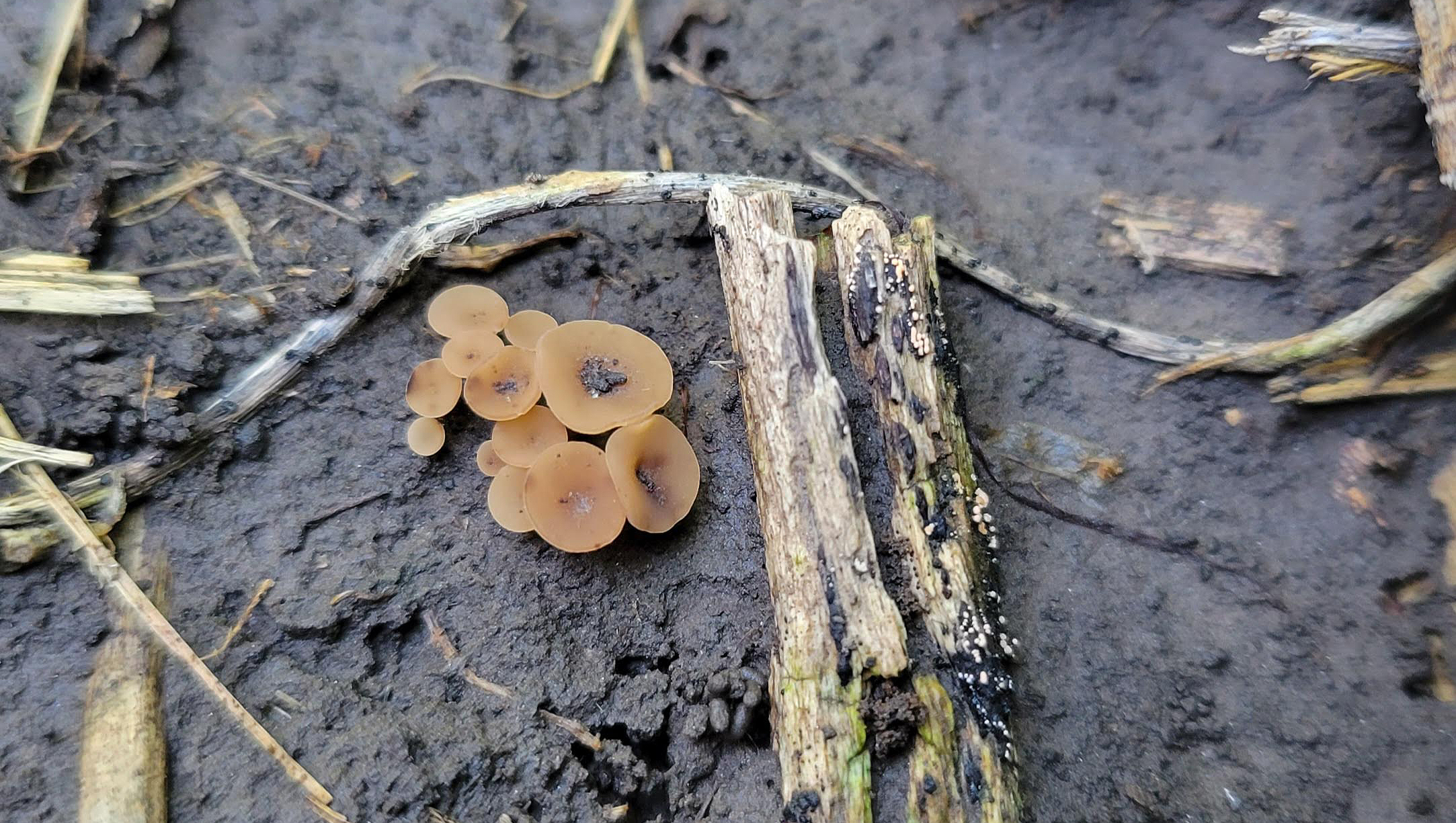By Dylan Mangel | Extension Plant Pathologist
Pathogen
Brown spot is caused by the fungus Septoria glycines and may also be called Septoria leaf spot. It was first reported in the U.S. in 1923, infecting soybeans in North Carolina and is now widely distributed through the north-central states, the mid-Atlantic states, and the southeastern U.S. However, brown spot rarely affects soybean yield in Nebraska as it primarily impacts leaves near the soil surface.
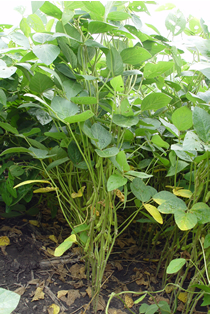
Maximum potential yield loss estimates due to brown spot range from 8% to 15% and occur when 25% to 50% of the canopy prematurely defoliates. Severe brown spot infection usually results in smaller seed size. The disease is most severe when soybean is grown continuously in the same field, particularly in fields where tillage is reduced, since this is a residue-borne disease. Cumulative state yield loss estimates are generally below 0.31% across the north-central region.
Video: Identifying Septoria Leaf Spot
Video: Managing Septoria Leaf Spot
Disease Symptoms
Infection occurs as early as the V2 growth stage on lower leaves. Symptoms start as dark brown, irregular spots on both upper and lower leaf surfaces. Lesions typically have a yellow or chlorotic halo when held up to a back light. Adjacent lesions frequently merge to form irregularly shaped blotches.
Under favorable weather conditions (warm, wet weather), the disease may continue to spread to the upper canopy. Late in the growing season, infected leaves may turn rusty brown or yellow and drop prematurely.
Symptoms of brown spot can also develop on stems and pods of plants approaching maturity. Stem and pod lesions have indefinite margins, are dark in appearance and range in size from flecks to larger areas.
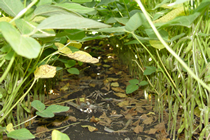
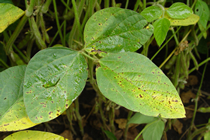
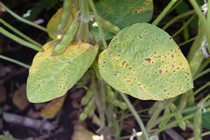
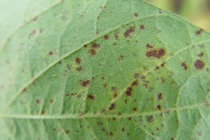
Favorable Environmental Conditions
Brown spot development is favored by warm, moist weather, which promotes sporulation of the pathogen in the primary lesions. Severity increases due to increasing leaf wetness periods of six to 36 hours. Conidia are dispersed by wind or splashing rain. The optimal temperature for pathogen development is 77°F, but disease symptoms develop at 60-85°F.
Management
Genetic Resistance
The onset of brown spot symptoms is influenced by the relative maturity of the soybean variety, and symptoms appear earlier in the season on an early-maturing variety. Varieties vary in their susceptibility to this disease, but resistance has not been identified.
Cultural Practices
Brown spot is more severe in continuously cropped soybean fields. Reduced tillage systems will tend to have more brown spot as the pathogen overwinters in residue.
Chemical/Biological Control
Application of fungicides to manage brown spot in Nebraska is typically not warranted with most varieties. However, in irrigated fields or in wet years with a variety known to develop significant brown spot, a fungicide application may increase profitability. If applied, timing of the application should be in the flowering through pod fill stages depending on disease development.
Resources
- Fungicide Efficacy for Control of Soybean Foliar Diseases, https://cropprotectionnetwork.org/publications/fungicide-efficacy-for-control-of-soybean-foliar-diseases
- Brown Spot of Soybean, Nebraska Extension NebGuide G2059
- Septoria Brown Spot of Soybean, https://cropprotectionnetwork.org/encyclopedia/septoria-brown-spot-of-soybean
Updated from a previous article by Loren J. Giesler, former extension plant pathologist
Soybean Diseases
- Soybean Diseases (Home)
- Anthracnose
- Bacterial Blight
- Bacterial Pustule
- Bean Pod Mottle Virus
- Brown Spot
- Brown Stem Rot
- Charcoal Rot
- Frogeye Leaf Spot
- Phytophthora Root and Stem Rot
- Pod and Stem Blight
- Purple Seed Stain
- Rhizoctonia Root Rot
- Sclerotinia Stem Rot
- Soybean Cyst Nematode (SCN)
- Soybean Mosaic Virus
- Soybean Rust
- Stem Canker
- Sudden Death Syndrome (SDS)
